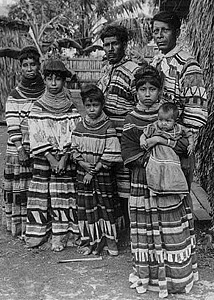
Courtesy of the Library of Congress, LC-USZ62-5749
Big Cypress National Preserve in southern Florida preserves more than 720,000 acres of the vast and ecologically essential Big Cypress swamp. Established in 1974 as one of the first national preserves, the Big Cypress National Preserve protects the water quality, natural resources, and ecological integrity of the Big Cypress Swamp. This diverse place, which is home to American alligators, anhinga, egrets, herons, river otters, bobcats, black bears, Florida panthers, Cypress trees, air plants, bromeliads, orchids, and hammock trees, has also been a home and refuge to both the Miccosukee Tribe of Florida and the Seminole Tribe of Florida.
For a long time, beginning well before the arrival of the Miccosukee and Seminole, the Big Cypress Swamp was a homeland for a variety of American Indian tribes. Evidence that pre-contact American Indians inhabited this area exists in pottery shards, ceramics, bone and shell tools, and charcoal remains. At the time of European contact around A.D. 1500, a thriving population lived in southern Florida, including at least four separate tribes: the Calusa, the Tequesta, the Jega, and the Ais. These tribes occupied the Big Cypress Swamp area primarily from about A.D. 500 until about A.D. 1400.
The Miccosukee and Seminole people harvested corn, beans, and squash, and also fished and hunted deer, wild turkeys, rabbits, and alligators. Both tribes lived in houses called Chickees. Their homes were made of a cypress log frame fitted with a palmetto thatch roof. To navigate the swamps, the Miccosukee and Seminoles made flat dugout canoes from hollowed-out cypress logs, and steered these canoes with poles rather than paddles. The canoes were large enough to transport an entire family with their household and trade goods.
A visit to Big Cypress National Preserve allows visitors to explore the sights and sounds that a variety of pre-contact and later American Indian tribes experienced and that the Miccosukee Tribe of Florida and the Seminole Tribe of Florida still experience today.
Big Cypress National Preserve is located between the cities of Miami and Naples in Southwest FL. Interstate 75 (Alligator Alley) and U. S. Highway 41 (Tamiami Trail) are the main roads that traverse the site. A number of sites within Big Cypress National Preserve are listed in the National Register of Historic Places; however, their addresses are restricted to help protect their historic integrity and cultural significance. Most visitor facilities within the preserve are open and accessible every day of the year. Some seasonal and emergency closures may occur. The Oasis Visitor Center is open from 9:00 am to 4:30 pm daily, except for December 25. For more information, visit the National Park Service Big Cypress National Preserve website or call 239-695-1201.
Last updated: August 7, 2017
